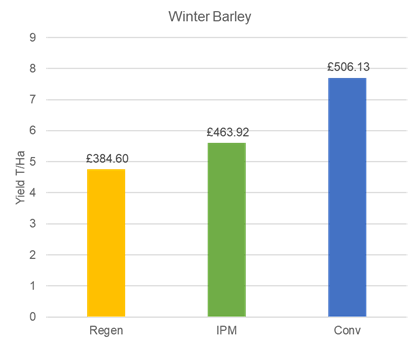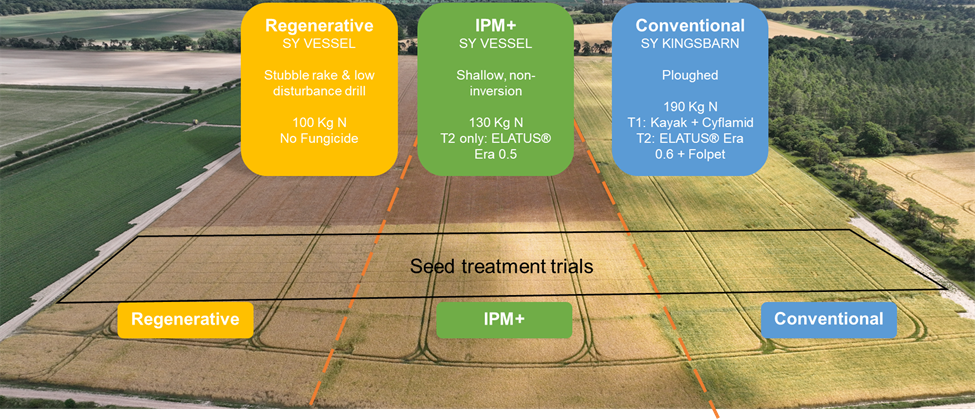The first year of any long-term project is as much about setting foundations and learning about the field environment as it is generating results. The first season at the Elveden Sustainability Site was a challenge, but much was learned along the way.
The different systems were managed flexibly throughout the season with our overall objectives in mind. The key differences were in cultivation practice, variety choice, nitrogen and fungicide inputs as outlined below:
The varietal choices were made on the basis that SY Kingsbarn is the highest yielding feed winter barley for the eastern region and with the ‘maximum yield’ mindset in the conventional system, this was the obvious choice. In the IPM and Regen systems we decided upon a winter malting variety in order to capitalise on malting premiums (if we hit the specification of course!). SY Vessel is a non-GN producing winter malting variety which has approval for both the brewing and malt distilling sectors. The low grain N requirements of these markets also gave us the opportunity to reduce N inputs which is especially important in the Regen area where carbon footprint is top of mind.
The weather was a challenge with some extremely hot summer days and below average rainfall. From a crop agronomy point of view this led to low disease levels in the crop, hence relatively low inputs. Yields were also impacted by the hot, dry weather which reduced the grain filling period.
In terms of the grain nitrogen levels required for a quality crop, we were looking for grain N of 1.6-1.75% for a brewing spec, or <1.65% for malt distilling. Both the regen and IPM+ crops came back at 1.2% grain N which would be the very bottom end of a malt distilling specification. Given the borderline nature of the quality, we decided that for all further calculations, these crops should be considered as feed crops only.

The net profits in this chart are calculated on a feed value of £220/tonne.
We also drilled some plots of SY Kingsbarn with different seed treatments across all 3 of the different systems. With good autumn conditions we didn’t see any differences in emergence, or at harvest after the extreme weather conditions in the summer.
Following the winter barley crop we needed to establish a non-cereal break crop and after much deliberation settled on beans. Although this is not a crop grown on the estate, there were several reasons for this decision:
Low N input (high N price)
Maintaining low/no till approach in Regen area
Desire to explore cover crops and SFI opportunities
